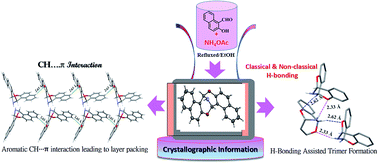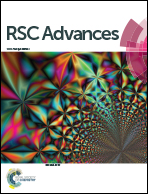Highly stable naphthalene core based novel cleft-shaped strain molecule: influence of intermolecular H-bonding architectures†
Abstract
The significance of intermolecular classical and non-classical H-bonding interactions in the stabilization of a naphthalene core based conformationally rigid cleft-shaped 1,5-dioxocin (BNAP) is presented here. The importance of H-bonding interactions to account for the unusual stability of a catalytically important novel molecule is reported for the first time. In addition to strong CH⋯π interactions, the formation of the unique intermolecular seven-membered H-bonded ring in the crystalline state through classical and non-classical H-bonding interaction was found to provide the unusual stability. This supramolecular structure was also found to impart stability in the presence of a strong acid as evident from the detailed UV-Visible spectroscopic studies. In addition to DFT calculations, the Hirshfeld surfaces, mapped with dnorm, and 2D fingerprint plots, support the existence of these classical and non-classical H-bonding and CH⋯π interactions. Furthermore, BNAP shows its remarkable catalytic activity for the Knoevenagel condensation reaction.


 Please wait while we load your content...
Please wait while we load your content...